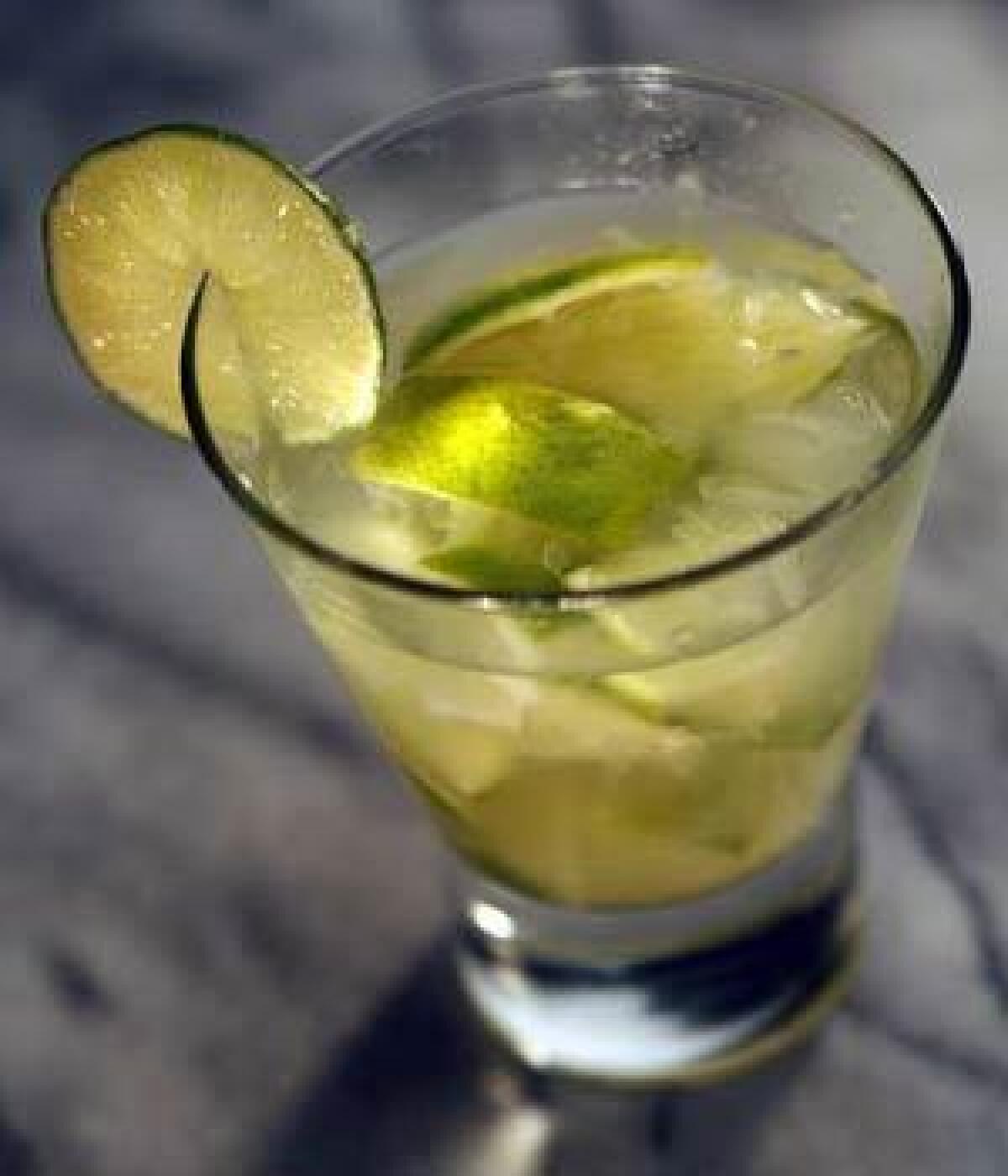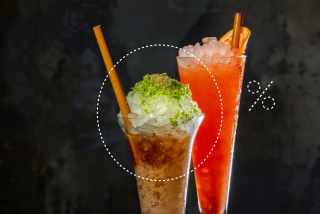A toast to the caipirinha

Now that Brazil is slated to become the first South American country to host the Olympics, maybe Americans will pay more attention to one of its finest exports: cachaça. Made from fermented sugar cane juice, the clear, fiery liquor puts the defining kick in Brazil’s national cocktail, the caipirinha.
Made with cachaça, muddled lime and sugar, a caipirinha is a profoundly simple beverage that perfectly captures the restless, vibrant spirit of the nation that loves it. Unfortunately, though, we don’t seem to have much of an appreciation for it in the States.
“I’m still amazed how challenging it is for people to say caipirinha and cachaça,” says Steve Luttmann, the founder of Leblon Cachaça, one of the new boutique brands that have been making inroads in the U.S. in recent years. (Don’t be one of those people. Say kye-peer-EEN-yah and ka-SHAH-sa.) Luttmann cites a study by BuzzBack Market Research in New York indicating that awareness in the U.S. of the caipirinha among cocktail drinkers is 30%, compared with 85% for the mojito, the caipirinha’s closest cousin.
As someone who quit her job and moved to Rio de Janeiro for a month because she loved caipirinhas so much (OK, I also loved the beach, the music and the churrascarias), I am here to say: You’re missing out, America.
I sipped my first caipirinha in July 2004 on a drizzly Brazilian winter evening. I was 28 and sitting at an old wooden table inside a dimly lighted Italian restaurant called La Trattoria just off Copacabana beach. The waiter brought me a caipirinha by default after I failed miserably at ordering a vodka and soda in Spanish. (Note to everyone who told me otherwise: Spanish and Portuguese are not “practically the same thing.”)
The drink came in a small cone-shaped glass with a flat bottom. Round ice cubes mingled with shaggy slices of freshly muddled lime inside a pear-colored liquid. A fat lime wheel served as garnish. The concoction smelled rich and earthy with overtones of burnt sweetness. The taste was a revelation: a silky mixture of sweet and sour, with bitter notes balanced by an arresting freshness. It hit my tongue with smooth precision and burned its way down my chest.
Before my first night in Rio was over, I had ordered two more caipirinhas. Melting into the evening with each sip, I became increasingly aware of the bustling city streets around me. The smell of sea salt, tropical vegetation and roasted meat drifted through the damp air. Scruffy teenagers played guitar on a curb, couples danced by and vendors peddled black bean soup, candied nuts, boiled corn and plastic tubes filled with flavored cachaça.
“Unfortunately and fortunately, cachaça comes kind of early in one’s life when you live in Brazil,” says Francisco Carvalho, the founder of Pampas Grill, a Brazilian churrascaria with two L.A. locations. Carvalho moved to Los Angeles more than 20 years ago from Belo Horizonte, Brazil, when he was 24, but says he drank his first caipirinha when he was 17. Although he favors margaritas these days, he has never forgotten how to make a caipirinha.
“You develop your own taste. But for me, I use one regular soupspoon of white sugar and one nice juicy lime. You squish them together in a cup -- you don’t need any special cup -- and then you add a nice shot of cachaça with a little extra for the saints,” he says. “That’s the excuse that they have there. Then you stir it very well and add maybe four or five cubes of ice and that’s it. It’s a basic drink, very simple.”
For me, the taste of that simplicity turned to love, and when I returned to Rio in 2004, I rented an apartment near the beach. There I drank many more caipirinhas (easy now, I also did some writing). And I spent a good deal of time prowling the streets of Rio neighborhoods -- bohemian Lapa, tony Ipanema and the hills of Santa Teresa -- for the perfect caipirinha, which roughly translates as “little countryside drink.”
I thought I found it in a graffiti-ridden pool hall in Lapa, where the dirty front desk served as both ball rental spot and bar. But it was actually at a fine restaurant in the Rio neighborhood of Leblon (a restaurant that I am sorry to say I no longer remember the name of) that I finally hit on it.
The bartender -- a short, muscular man with a very business-like demeanor -- mixed caipirinhas like it was his religion. His secret: less sugar than most places used and a devotion to cutting out every vestige of the white pith in the center of the lime. That eliminates all the bitterness from the lime, he said. And it really works. It’s a crucial step that is often left out.
Key limes were traditionally used in Brazil, until disease wiped them out in the 1950s. Though the drink is now often made with Persian limes, Key limes are best. (And you should use fine white sugar.)
Carvalho says that ordering a caipirinha in Los Angeles is a hit-or-miss proposition, just like ordering a margarita. But surely, our odds of getting a good one here will go up as people familiarize themselves with cachaça.
Luttmann makes an apt analogy: “A caipirinha tastes kind of like a margarita, but it’s made like a mojito, and it’s a cocktail platform that mixologists can mix in all sorts of ways.”
But what exactly is it? “Cachaça is cachaça. A caipirinha is a caipirinha. In some ways, both are metaphors for Brazil,” Luttmann says. “A lot of people don’t understand Brazil yet, but that’s changing.”
More to Read
Eat your way across L.A.
Get our weekly Tasting Notes newsletter for reviews, news and more.
You may occasionally receive promotional content from the Los Angeles Times.







